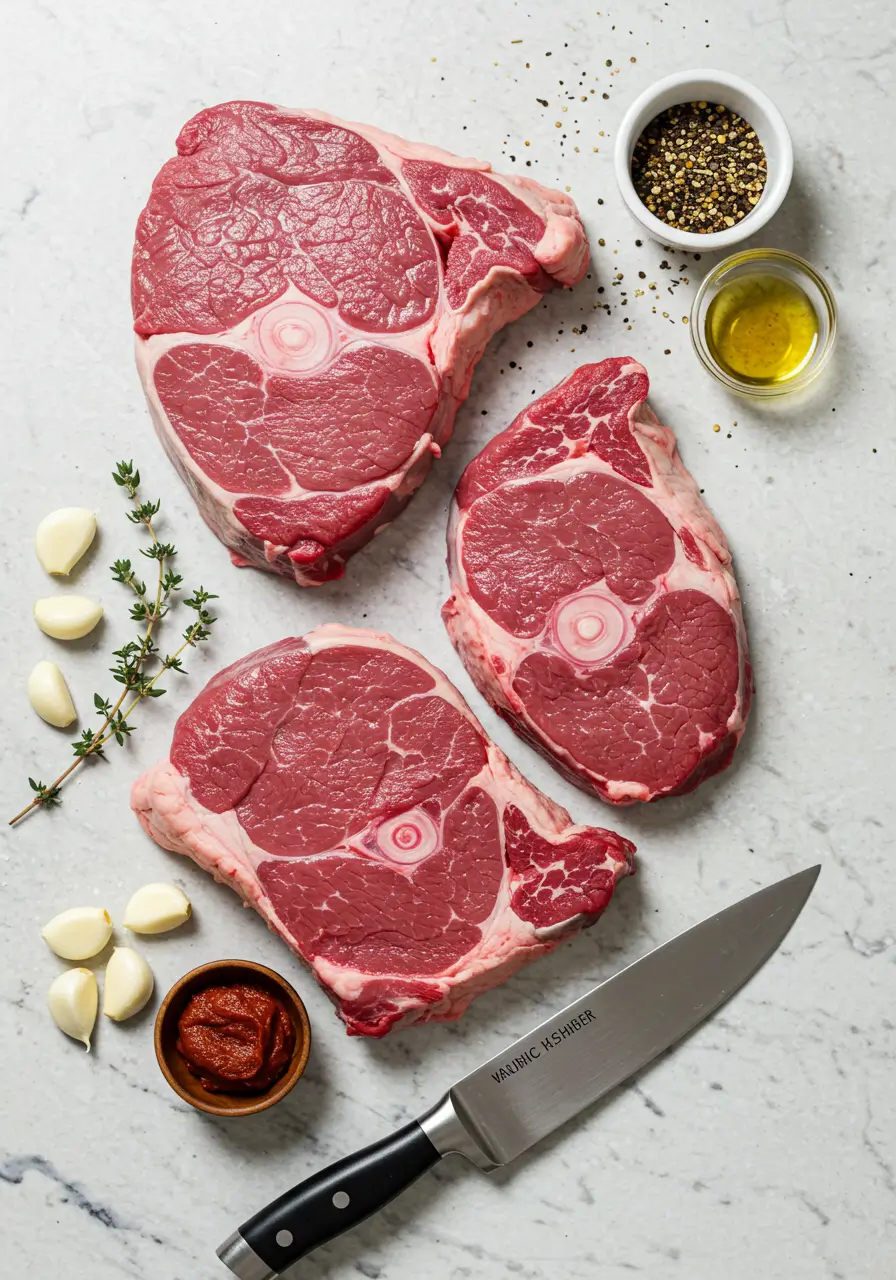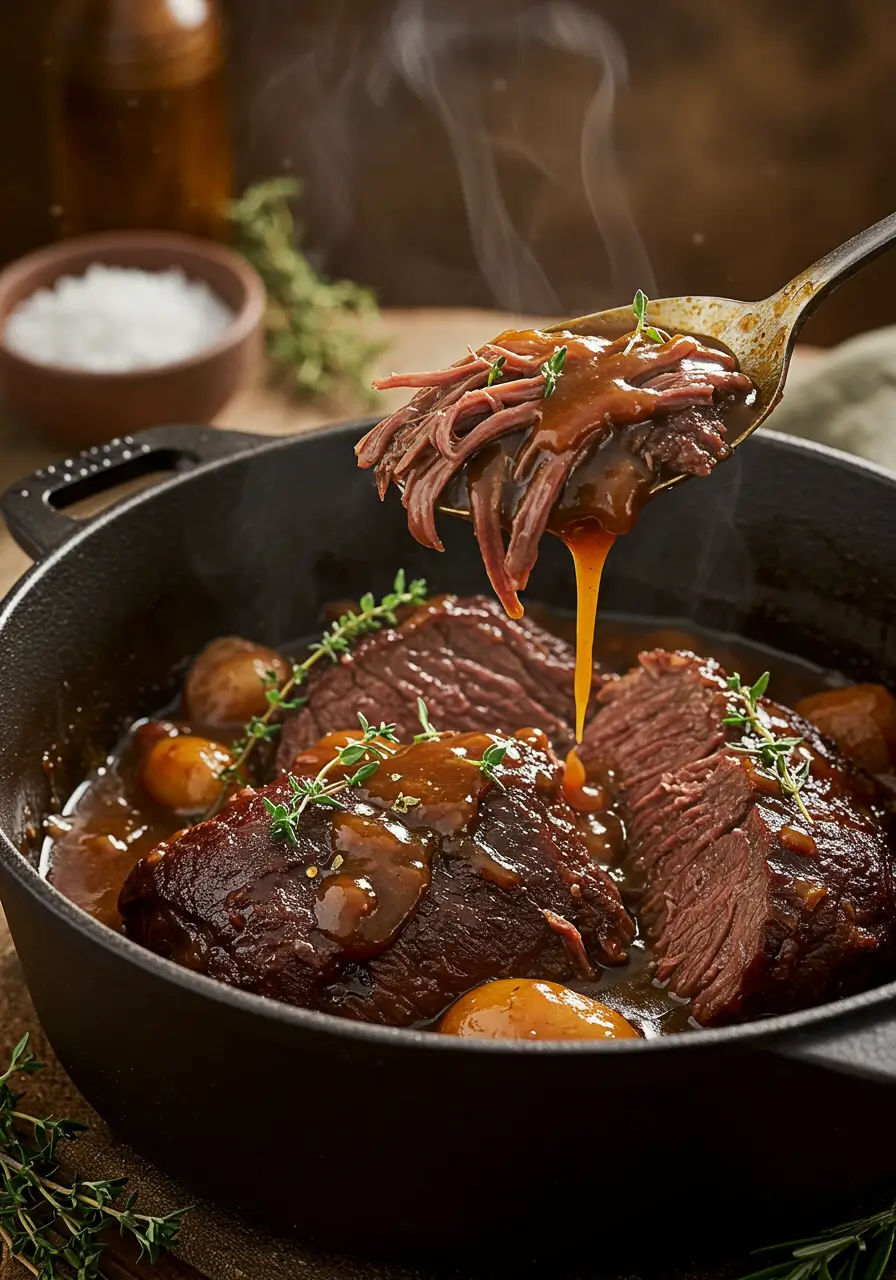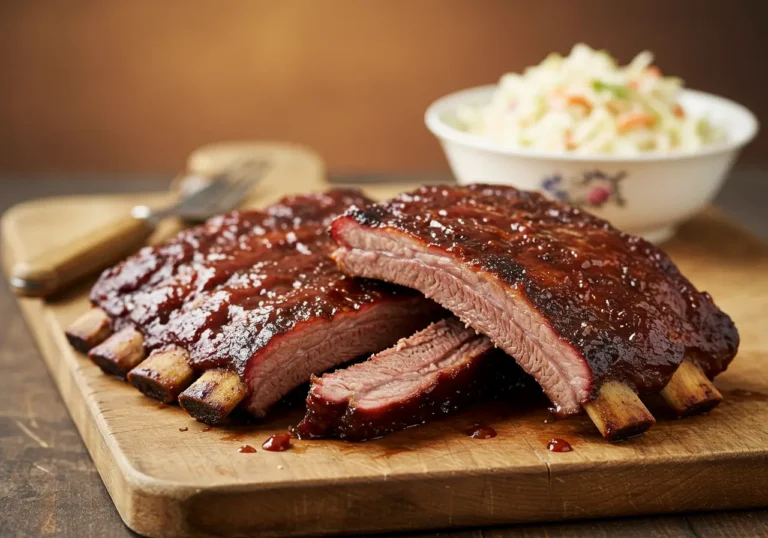Slow Cooked Beef Cheeks
Table of Contents
Slow Cooked Beef Cheeks are the answer to your culinary frustrations. These melt-in-your-mouth beef cheeks transform from a humble cut into a luxurious dish that will impress even the most discerning dinner guests.
As a chef who’s specialized in braised meats for over 15 years, I’ve perfected the technique that guarantees tender, flavorful Beef Cheeks every single time. The secret lies in the slow cooking process that breaks down the collagen into rich gelatin, creating that signature silky texture.
In this guide, I’ll walk you through everything you need to know about selecting, preparing, and cooking beef cheeks to perfection. You’ll discover insider tips for meat selection, flavor-packed marinades, foolproof cooking methods, and delicious serving suggestions that will elevate your meal to restaurant quality.
Why This Meat Recipe Works
- Uses an affordable, often overlooked cut that butchers love but home cooks rarely discover
- Requires minimal active cooking time – just set it and forget it for 4-6 hours
- Creates a restaurant-quality dish that’s impressive enough for special occasions but easy enough for weekends
- Develops deep, complex flavors that improve overnight, making it perfect for meal prep
- Features a versatile base recipe that can be adapted to multiple cuisines and flavor profiles
Choosing the Right Meat
Best Cuts for This Recipe
Beef Cheeks are the star of this recipe, and for good reason. These facial muscles get plenty of exercise throughout the cow’s life, resulting in a cut that’s packed with connective tissue and deep beef flavor. When cooked low and slow, this collagen melts into gelatin, creating an incredibly rich, silky sauce and fork-tender meat.
Buying Tips
Look for Beef Cheeks that have a deep, burgundy-red color with some marbling throughout. Each cheek typically weighs between 12-16 ounces, and you’ll want one per person for a generous serving. While not always displayed in the meat case, most butchers carry Beef Cheeks or can order them with a day’s notice. Ask for them to be trimmed of excess fat and silverskin to save you prep time at home.
Substitutions
If you absolutely cannot find Beef Cheeks, beef short ribs or oxtail make decent substitutes as they also contain significant amounts of collagen. However, the unique texture and flavor of Beef Cheeks is difficult to replicate exactly, so it’s worth seeking out the real thing.
Ingredients & Prep

Meat Prep Essentials
Before cooking, pat your Beef Cheeks dry with paper towels and inspect for any remaining silverskin or tough membranes. Trim these away with a sharp knife. For maximum flavor development, season generously with salt and pepper at least 40 minutes before cooking, allowing the salt to penetrate the meat.
Marinades/Rubs
For classic Beef Cheeks:
- 2 tablespoons olive oil
- 3 cloves garlic, minced
- 1 tablespoon fresh thyme leaves
- 1 tablespoon tomato paste
- 2 tablespoons balsamic vinegar
Mix these ingredients and coat the Beef Cheeks thoroughly. For best results, marinate overnight in the refrigerator, allowing the acid in the balsamic to begin tenderizing the meat and the aromatics to infuse their flavors.
Pantry Staples
Keep these essentials on hand for perfect Beef Cheeks:
- Good quality beef stock (homemade is best, but low-sodium store-bought works)
- Dry red wine (Cabernet Sauvignon or Merlot)
- Bay leaves
- Black peppercorns
- Aromatic vegetables (carrots, celery, onions)
Step-by-Step Cooking Instructions
Pre-Cooking Prep
- Remove marinated Beef Cheeks from the refrigerator 30 minutes before cooking to bring them closer to room temperature.
- Preheat your oven to 300°F (150°C).
- Pat the marinated meat dry with paper towels to ensure proper browning.
- Prepare your mirepoix: dice 2 carrots, 2 celery stalks, and 1 large onion.
Cooking Method
- Heat 2 tablespoons of oil in a large Dutch oven over medium-high heat until shimmering.
- Sear the Beef Cheeks on all sides until deeply browned, about 3-4 minutes per side. Work in batches if necessary to avoid overcrowding.
- Remove the meat and set aside. Reduce heat to medium.
- Add your mirepoix to the pot and sauté until softened, about 5-7 minutes.
- Add 3 cloves of minced garlic and cook until fragrant, about 30 seconds.
- Deglaze with 1 cup of dry red wine, scraping up the flavorful brown bits from the bottom.
- Return the Beef Cheeks to the pot and add enough beef stock to come halfway up the sides of the meat.
- Add 2 bay leaves, 1 sprig of rosemary, and 3 sprigs of thyme.
- Bring to a simmer, cover with a tight-fitting lid, and transfer to the preheated oven.
- Braise for 4-5 hours, until the Beef Cheeks are fork-tender.
Doneness Check
Unlike steaks or roasts, Beef Cheeks aren’t measured by internal temperature for doneness. Instead, test by inserting a fork—it should slide in with almost no resistance, and the meat should pull apart easily. If there’s any resistance, continue cooking and check again in 30-minute intervals.
Resting
Once done, remove the Beef Cheeks from the cooking liquid and let rest for 15 minutes before serving. This allows the meat fibers to relax and retain more moisture. Meanwhile, strain the cooking liquid and reduce it on the stovetop to create a rich, flavorful sauce.
Pro Tips for Perfect Meat

Avoiding Tough/Dry Meat
- Never rush the cooking process—low and slow is essential for Beef Cheeks
- Keep the cooking liquid at a gentle simmer, never a boil
- Ensure your pot has a tight-fitting lid to prevent moisture loss
- Check liquid levels halfway through cooking and add more stock if needed
- For even more tender results, cook a day ahead and refrigerate overnight in the cooking liquid
Tool Recommendations
- Heavy Dutch oven with a tight-fitting lid (cast iron or enameled cast iron)
- Sharp chef’s knife for proper trimming
- Silicone-tipped tongs for handling the meat
- Fine-mesh strainer for the perfect sauce
Storage & Reheating
Beef Cheeks actually improve with time, making them ideal for make-ahead meals. Store them in their cooking liquid in an airtight container for up to 3 days in the refrigerator or freeze for up to 3 months. To reheat, thaw if frozen, then warm gently in the cooking liquid over low heat until heated through.
Flavor Variations
Spicy Twist
Add 2 tablespoons of harissa paste to your marinade and include 1 teaspoon of smoked paprika in your braising liquid for a North African-inspired dish with a gentle heat that complements the richness of the Beef Cheeks.
Keto/Paleo
This dish is naturally keto and paleo-friendly. For strict paleo, simply replace the wine with additional beef stock and add 1 tablespoon of apple cider vinegar for acidity. Serve over cauliflower mash instead of traditional sides.
Global Flavors
- Asian-Inspired: Replace the wine with 1/4 cup soy sauce, 2 tablespoons rice vinegar, 1 tablespoon grated ginger, and 2 star anise pods in the braising liquid.
- Mexican Variation: Add 2 dried ancho chilies, 1 cinnamon stick, and the zest of 1 orange to your braising liquid for a mole-inspired flavor profile.
Serving Suggestions
Slow Cooked Beef Cheeks pair beautifully with sides that can soak up their rich sauce:
- Creamy polenta or mashed potatoes
- Buttered egg noodles
- Roasted root vegetables
- Sautéed mushrooms with thyme
For wine pairings, the richness of Beef Cheeks calls for full-bodied reds with good acidity to cut through the richness. Try a Barolo, Syrah, or Malbec. For beer lovers, a Belgian dubbel or a rich porter complements the deep flavors perfectly.
FAQs
Can I make Slow Cooked Beef Cheeks in a slow cooker?
Yes! Sear the Beef Cheeks and sauté the vegetables as directed, then transfer everything to a slow cooker. Cook on low for 8-10 hours or high for 5-6 hours. The results won’t be quite as rich as oven-braised, but still delicious.
My Beef Cheeks are still tough after cooking. What went wrong?
They simply need more time. Beef Cheeks have a lot of collagen that needs to break down, and the cooking time can vary depending on the size and age of the cut. Return them to the oven and check again every 30 minutes until fork-tender.
Can I prepare Beef Cheeks in advance for a dinner party?
Absolutely! In fact, Beef Cheeks taste even better the next day. Cook them completely, then cool and refrigerate in their cooking liquid overnight. The flavors will deepen, and you can simply reheat gently before serving.
Best Amazon Picks :
- Instant Pot Duo Plus
- Cuisinel Cast Iron Skillets Set
- Knife Sets with Built-in Sharpener
- Precision Vacuum Sealer
Conclusion
Now that you’ve discovered the secrets to perfect Slow Cooked Beef Cheeks, it’s time to transform this humble cut into an extraordinary meal. The initial effort pays off tenfold when you take that first bite of melt-in-your-mouth meat bathed in rich, velvety sauce.
Thousands of home cooks have made this their go-to recipe for special occasions and Sunday dinners alike. The combination of affordable ingredients and restaurant-worthy results makes this dish a true culinary treasure.
Ready to try another comforting classic? Check out our Braised Short Ribs with Red Wine Sauce for another crowd-pleasing dish that showcases the magic of slow cooking!
Have You Tried Making Our Recipe?
There are no reviews yet. Be the first one to write one.







